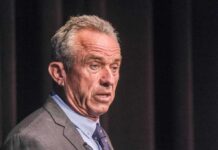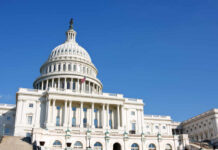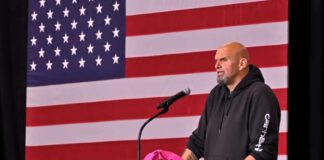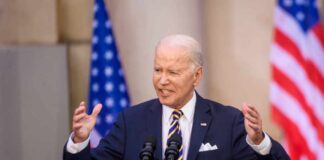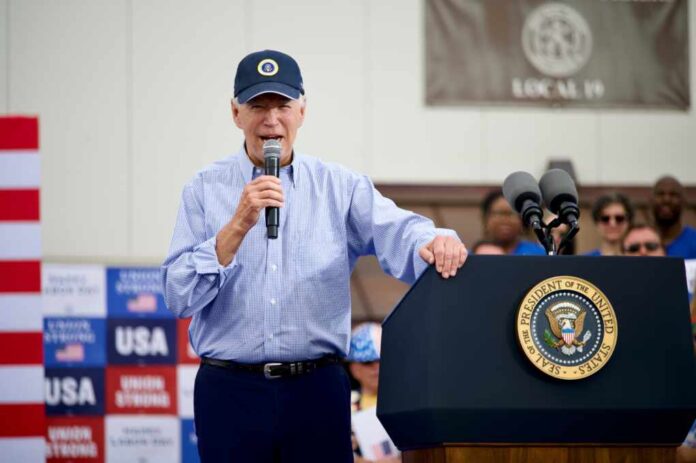
In a blow to ordinary Americans and a sharp critique of current economic policies, figures released Thursday morning reveal that U.S. wholesale inflation surged 0.6% in February. The clear signal that price pressures continue to plague the economy under the grip of the Biden administration was twice the amount predicted.
The Labor Department’s latest producer price index (PPI) report, an indicator of future consumer price trends, rose significantly last month. Prices at the wholesale level have now climbed 1.6% over the past year, the fastest climb since last September. The uptick is primarily driven by a notable 1.2% increase in goods prices, fueled by a staggering 4.4% leap in energy costs.
While the Biden administration might point to global challenges, these figures speak to a domestic dilemma: the failure of “Bidenomics,” a term critics use to describe the economic strategies employed by the current administration. Critics argue that excessive federal borrowing and spending have exacerbated these inflationary pressures, making life increasingly difficult for the average American family.
Evidence continues to mount that proves the consensus view on #inflation returning to 2% is wrong. Feb. #PPI, a leading indicator of #CPI, spiked by .6%, double estimates, matching the biggest MoM rise since June 2022. YoY the increase was 1.6%, the biggest rise since Sept. 2023.
— Peter Schiff (@PeterSchiff) March 14, 2024
The implications of these inflationary pressures extend beyond the supermarket and the gas pump. They resonate through the corridors of power in Washington, where the Federal Reserve grapples with the consequences of these fiscal policies. The central bank, which has raised rates 11 times in 2022 and 2023 to combat inflation, faces a complex decision landscape.
Despite previous signals suggesting a potential reduction in interest rates, the resurgence of inflation complicates the path forward, increasing the likelihood of a delayed or reversed course in monetary policy.
PPI is re-accelerating, up 0.6% m/m on headline vs expectations of 0.3%.
This means there is additional inflationary potential in the pipeline should companies decide to pass on higher costs to consumers aka "cost push inflation"
Usually a 2-3 month lag time for PPI -> CPI. pic.twitter.com/ZubiWPTJDB
— Markets & Mayhem (@Mayhem4Markets) March 14, 2024
This development is particularly concerning for low-income and fixed-income Americans disproportionately affected by price hikes. The recent inflation surge means these households will continue to face higher costs for essentials, such as food and rent, without the relief a rate cut could provide.
Moreover, the Biden administration’s fiscal and economic policies have come under scrutiny as they appear to contribute to the inflationary pressures rather than alleviate them. The notion of a “soft landing,” where inflation falls back to the Federal Reserve’s 2% target rate without thrusting the economy into recession, seems increasingly optimistic and detached from the reality being experienced by actual Americans.
Inflation once again hotter than expected #PPI up .6% vs estimate of up .3% @GrantsPub Jim Grant just told me the @federalreserve may consider RAISING rates this year if inflation stays elevated and the economy continues to slow join us now @MorningsMaria @FoxBusiness
— Maria Bartiromo (@MariaBartiromo) March 14, 2024
Retail sales data, another lens through which to gauge the economic landscape, revealed a 0.6% increase for February, a figure that, while positive, still fell short of expectations. This suggests that despite enduring price increases, consumer spending is not keeping pace with inflation, a concerning sign for overall economic health.
As the Federal Reserve prepares for its upcoming policy meeting, all eyes will be on its decision regarding interest rates. With the latest inflation data exceeding expectations, the central bank’s previous openness to rate cuts seems more like wishful thinking than a tangible plan. This situation puts additional pressure on the Fed’s strategies and, by extension, on the economic policies of the Biden administration.




